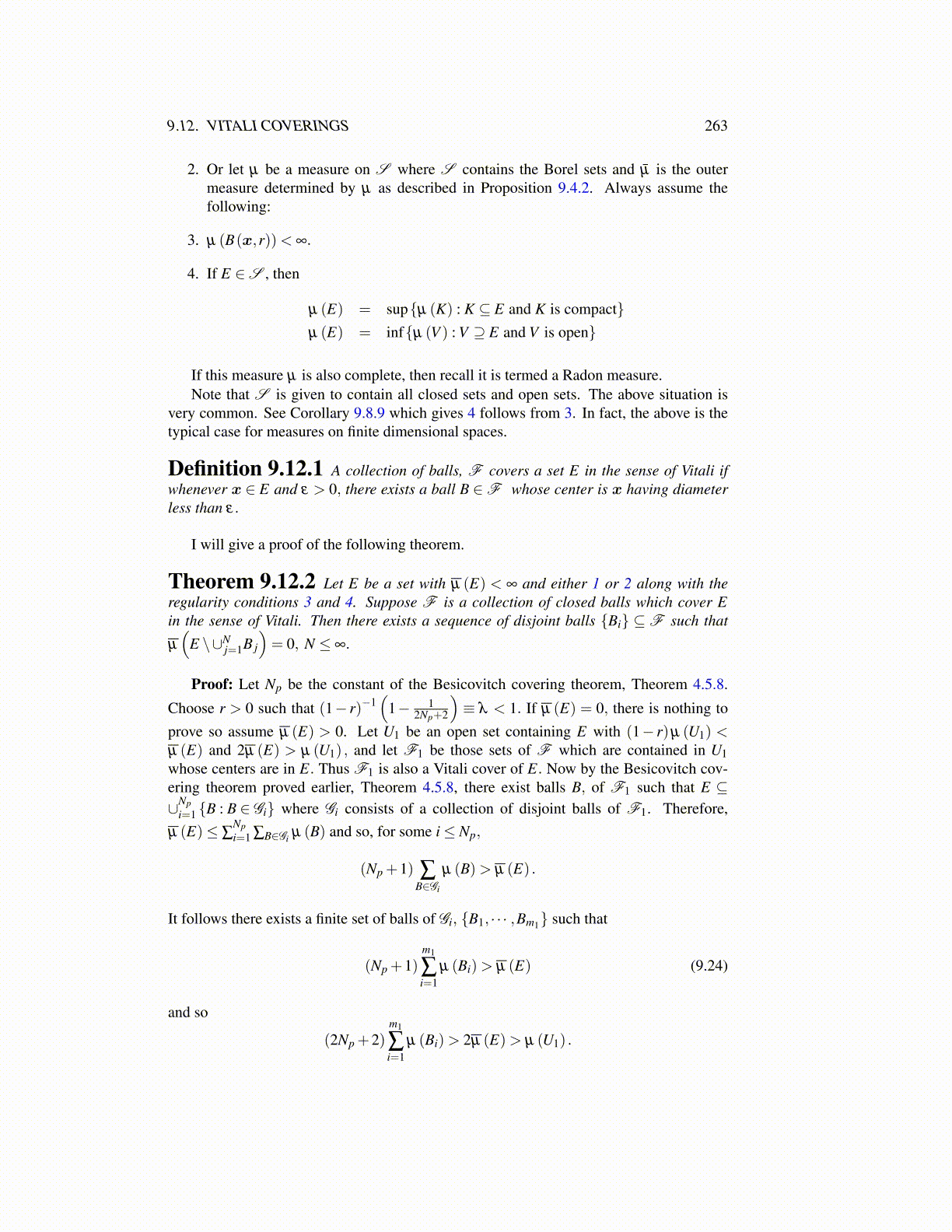
9.12. VITALI COVERINGS 263
2. Or let µ be a measure on S where S contains the Borel sets and µ̄ is the outermeasure determined by µ as described in Proposition 9.4.2. Always assume thefollowing:
3. µ (B(x,r))< ∞.
4. If E ∈S , then
µ (E) = sup{µ (K) : K ⊆ E and K is compact}µ (E) = inf{µ (V ) : V ⊇ E and V is open}
If this measure µ is also complete, then recall it is termed a Radon measure.Note that S is given to contain all closed sets and open sets. The above situation is
very common. See Corollary 9.8.9 which gives 4 follows from 3. In fact, the above is thetypical case for measures on finite dimensional spaces.
Definition 9.12.1 A collection of balls, F covers a set E in the sense of Vitali ifwhenever x ∈ E and ε > 0, there exists a ball B ∈F whose center is x having diameterless than ε.
I will give a proof of the following theorem.
Theorem 9.12.2 Let E be a set with µ (E) < ∞ and either 1 or 2 along with theregularity conditions 3 and 4. Suppose F is a collection of closed balls which cover Ein the sense of Vitali. Then there exists a sequence of disjoint balls {Bi} ⊆F such that
µ
(E \∪N
j=1B j
)= 0, N ≤ ∞.
Proof: Let Np be the constant of the Besicovitch covering theorem, Theorem 4.5.8.
Choose r > 0 such that (1− r)−1(
1− 12Np+2
)≡ λ < 1. If µ (E) = 0, there is nothing to
prove so assume µ (E) > 0. Let U1 be an open set containing E with (1− r)µ (U1) <µ (E) and 2µ (E) > µ (U1) , and let F1 be those sets of F which are contained in U1whose centers are in E. Thus F1 is also a Vitali cover of E. Now by the Besicovitch cov-ering theorem proved earlier, Theorem 4.5.8, there exist balls B, of F1 such that E ⊆∪Np
i=1 {B : B ∈ Gi} where Gi consists of a collection of disjoint balls of F1. Therefore,µ (E)≤ ∑
Npi=1 ∑B∈Gi µ (B) and so, for some i≤ Np,
(Np +1) ∑B∈Gi
µ (B)> µ (E) .
It follows there exists a finite set of balls of Gi, {B1, · · · ,Bm1} such that
(Np +1)m1
∑i=1
µ (Bi)> µ (E) (9.24)
and so
(2Np +2)m1
∑i=1
µ (Bi)> 2µ (E)> µ (U1) .